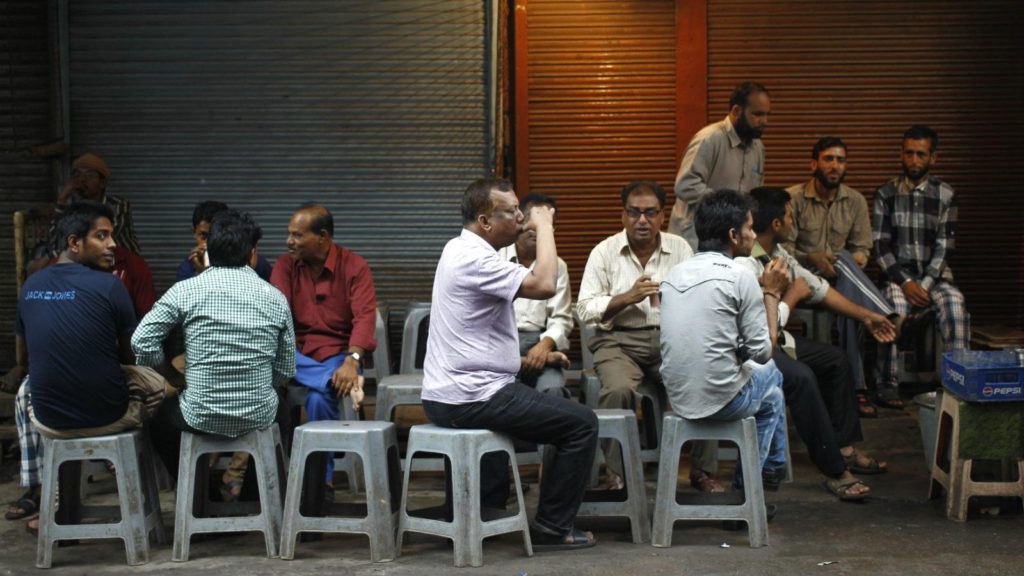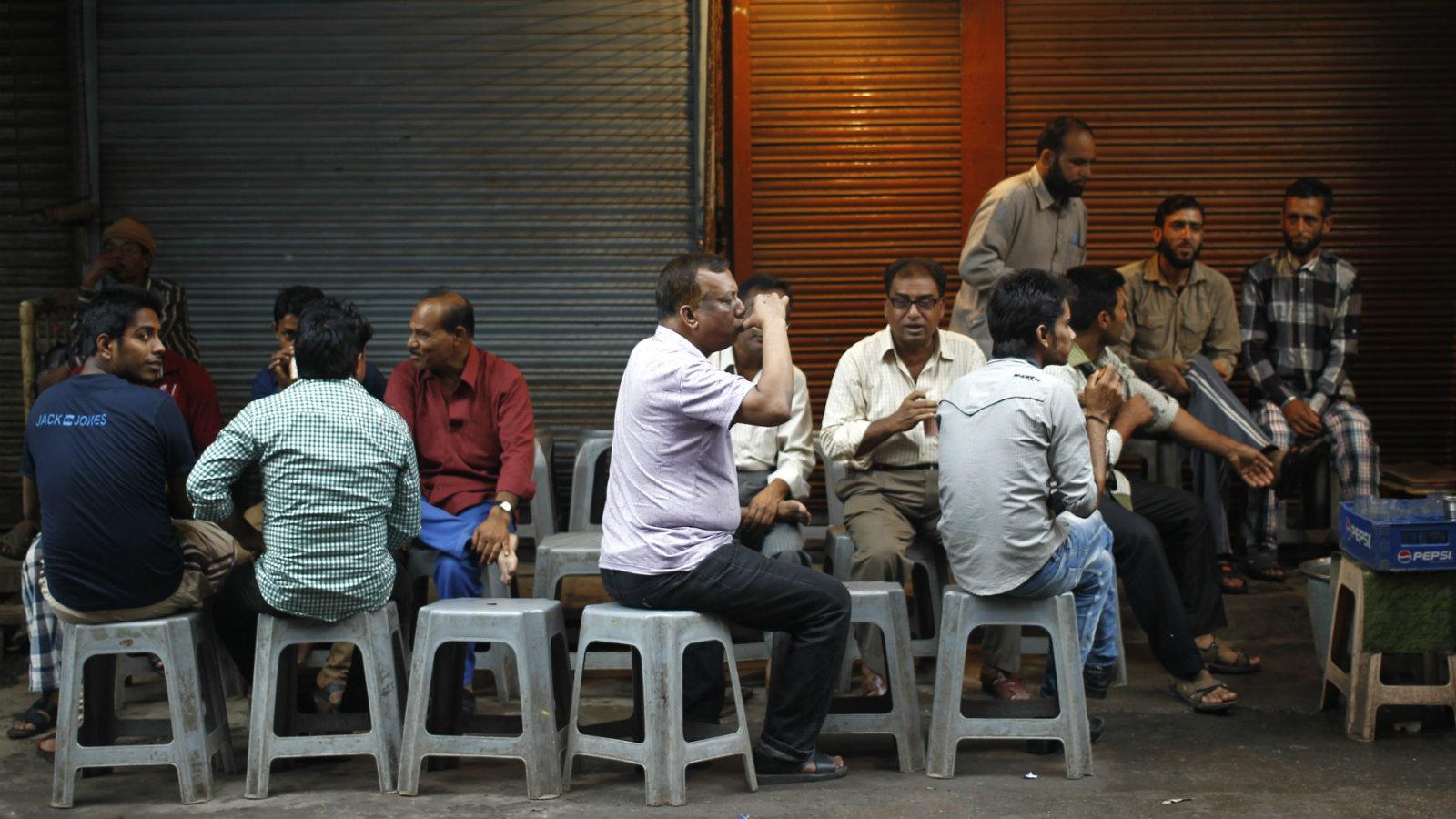
Despite being a site of social connections and interactions, markets occupy a peculiar position in sociological literature. The sociology of the market attempts to insert sociologists in the study of the market as a site of commerce and trade (Fligstein and Dauter, 2007). The approach often tends to overlook the role and function of markets as a public space of social interactions. This essay seeks to explore the market as a space of sociality and bonding through the field notes from a day of observation at a small roadside make-shift market in a middle-class neighbourhood of suburban Kolkata, where I live. Glesne (2016) claims that the activity of participant observation ranges across a continuum from mostly observation to mostly participation. My primary role was that of an observer of the market with some scant interaction with the people of the market. In Glesne’s (2016) continuum of participant observation, I would classify as an observer who was a participant.
Since I had seen the market develop gradually, I assumed certain things to be taken for granted. I had a preliminary idea about the number of shops in the market, and thus, my initial field notes noted 5-6 stalls in the market – only the shops that were visible from my house. As I started spending more time on the field, I realised that my presumptions were wrong – the market extended beyond the immediate few stalls that were visible to me. The market consists of approximately 10-12 shops, comprising both make-shift and permanent establishments.
The Market
The market is small but a cheerful and lively space. It starts at around eight in the morning and goes on till about 2 in the afternoon. Five of the shops are permanent – including a stationery shop, a groceries store (the biggest and the most popular in the area), a tea shop, an eatery selling petai porota, ghughni and koraishnutir kochuri. Different languages and conversations are heard throughout. Travelling hawkers cry out the name of their products, people huddle around the vegetable and fish stalls and bargain and check out the fresh produce. Some men sit in front of the local electronics goods shop and chat while music blares from a radio playing in one of the shops. Two or three men stand at the solitary tea shop of the market, drinking tea. Many of them order tea and carry it to their nearby adda located on the stairs of a closed shop nearby. Dogs while about on the road and occasionally get into fights only to be disciplined by the men. The sellers or shopkeepers of the different permanent and make-shift shops hail from different backgrounds – economic and caste. They are mostly young and middle-aged men. In a few cases, both the husband and the wife manage the shops. Female shopkeepers are rare, except a fish-seller who sits alone near the teashop.
No specific backgrounds could be identified of the buyers. They range from salaried professionals to female part-time domestic workers to cycle rickshaw pullers. The market thus becomes a space where people from different classes, castes, backgrounds, and genders meet and interact. There is no way to suggest that it becomes a space where such boundaries get eroded. The most prominent example that comes to mind is the gender composition of the market. The men outnumber the women easily. However, many female buyers were seen in the early hours of the market. As the day progresses, the number of women buyers reduce, presumably because they get busy cooking or doing other household chores. Maybe it was a matter of safety. The number of men surges simultaneously, and more men congregate at the place of the daily adda. Only the women shopkeepers and sellers remain by the end of the market, primarily outnumbered by the men.
On Observation
Observation is a difficult process. For a long time, I had dreaded being a participant-observer in the local market. As expected, my fieldwork had begun with a lot of questioning, unfriendly stares and looks from the buyers and sellers of the market –intrigued by the vigorous note-taking of a local boy. I was thus quite anxious during the first few hours of my fieldwork. Gradually as the day progresses, I sense my own integration in the market – hard looks of suspicion and questions. Many uncles of the neighbourhood passed questioning glances at me – one even stopped to enquire whether I was studying on the streets; another Dada from the local grocery store asks me whether I was writing poems on the street. I explain that I am doing this for a college assignment; the suspicion on these eyes gradually fade as I spend more and more time before they soften into glances of trust and acceptance.
People and the Market
Different people interact in the market in different ways. Some people come there to buy things; there are people who come there to have tea, smoke and chat and eat, and there are people who come to sell different things. All the important men of the locality have a particular pattern to their social interaction. The local real estate developer, for example, could be seen visiting the teashop every day. People swarm around him as he has his tea at the teashop at first and makes his way to the adda gradually. Similarly, the secretary of the neighbourhood club gets stopped by another man on Republic Day, who demands the remembrance of the Bengali novelist Saratchandra Chattopadhyay in the flag-hoisting ceremony on that day.
Exit from the Field
As the clock’s hands gradually move past one, I sense an urgency in the shopkeepers to pack up their things. Despite being an aspiring sociologist/anthropologist pursuing fieldwork, I still have to abide by the protocols that my family has laid down for me. I thus make my way back home, situated adjacent to the market. The moment I step into the compound of my building, I sense a strange detachment from the field – it feels like I have stepped into a different world. From the field, I am thus stepping back into the world of the text – of reflection and writing.
This probably is one of the most enriching parts of being a field researcher – acting as a bridge between different worlds – that of the field and the text. I walk back – seeing the seen in a way I had never seen earlier, feeling everything that I had never thought I would feel about daily, routine, mundane things that go on in everyday lives. Translating the field notes into a text is yet another rewarding task. I feel a vague sense of satisfaction as I end this sentence and write-up –contentment that only fieldwork, observation and immersion can bring oneself.
References:
- Fligstein, N., & Dauter, L. (2007). The Sociology of Markets. Annual Review of Sociology, 33, 105-128. https://www.annualreviews.org/doi/abs/10.1146/annurev.soc.33.040406.131736, accessed on 27th July 2021.
- Glesne, C. (2016). Becoming Qualitative Researchers: An introduction. Boston: Pearson.
***
Atmadeep Sengupta is an M.A. student in the Society and Culture Programme at the Department of Humanities and Social Sciences, Indian Institute of Technology (IIT), Gandhinagar.
